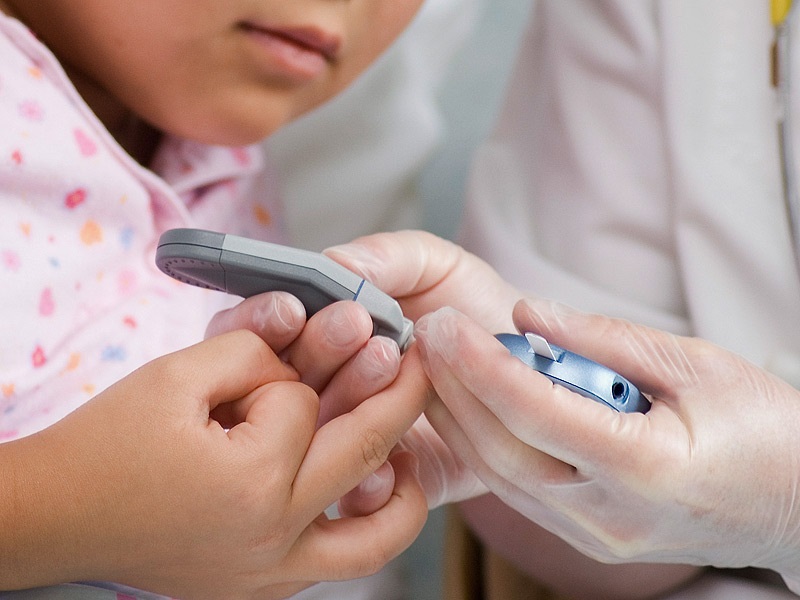Purpose of Blood Sugar Test: A blood sugar test is recommended by a doctor or healthcare professional to determine if you have prediabetes or diabetes. Diabetics can take Rbs test at home to monitor their blood sugar levels. By taking a blood sugar test regularly, it can help determine your blood sugar level so that you can adjust your diet, exercise, or diabetes medications.
Risks and Side Effects of a Blood Sugar Test: Monitoring your blood sugar by getting a test done has absolutely low to no risks or side effects. You could experience some welling, soreness, and bruising at the site of puncture, especially when drawing blood from a vein. There is nothing to worry as this will go away within a day.
Types of Blood Sugar Tests: Blood sugar tests can be done in two ways: Firstly, with the help of a glucometer. People who are managing or monitoring their diabetes prick their finger using a special ‘click’ pen-like device to puncture the skin for a drop of blood. This drop of blood is then placed on a strip and inserted into the glucometer. The glucometer measures the amount of glucose present and displays the reading on the screen.
The second method is by drawing blood from the vein. The blood sample is sent to the pathology laboratory for analysis.
Blood samples are generally obtained to screen for diabetes. To measure your blood sugar levels or a glycosylated haemoglobin your doctor will recommend a fasting blood sugar (FBS) test. It is also called a haemoglobin A1C test. The results of this test reveal the status of your blood sugar levels over the previous 90 days. The results will determine if you have prediabetes or diabetes and can monitor how your diabetes is controlled.
When to Test Blood Sugar: Depending on the type of diabetes you have and your treatment plan blood sugar levels are to be tested.
Type 1 diabetes: For management of type 1 diabetes with multiple doses of insulin or an insulin pump, you will want to monitor your blood sugar before eating a meal or snack, exercising, sleeping, critical tasks like driving or babysitting.
Increasing thirst and frequency in urination are symptoms of high blood sugar. If you have any of these symptoms, then check your blood sugar levels for hyperglycemia or high blood sugar.
Get the test done if you get symptoms like feeling shaky, sweaty or chilly, irritated or impatient, confused, lightheaded or dizzy, hungry and nauseous, sleepy, tingly or numb in the lips or tongue, weak, angry, stubborn, or sad. Some symptoms like delirium, seizures, or unconsciousness can be symptoms of low blood sugar or insulin shock. Check your blood sugar levels for hypoglycaemia or low blood sugar.
You might also have low blood sugar with no symptoms known as hypoglycemia unawareness. The blood sugar levels need to be tested more often if you have a history of hypoglycemia unawareness.
Some women develop gestational diabetes during pregnancy. Regular testing will ensure that your blood glucose level is within a healthy range. The doctor will recommend testing your blood sugar regularly in the case of gestational diabetes. After childbirth gestational diabetes usually goes away.
No scheduled testing or home testing is required if you have type 2 diabetes with a diet-and exercise-based treatment plan. If you are on medications that are not associated with low blood sugar then home testing is not required.
You can even wear a device for continuous glucose monitoring (CGM). The glucose sensor inserted under your skin reads the sugar in your body tissue on a continuous basis. You are alerted whenever your blood sugar is too high or too low. Get in touch with Portea for reliable blood sugar tests at home.




